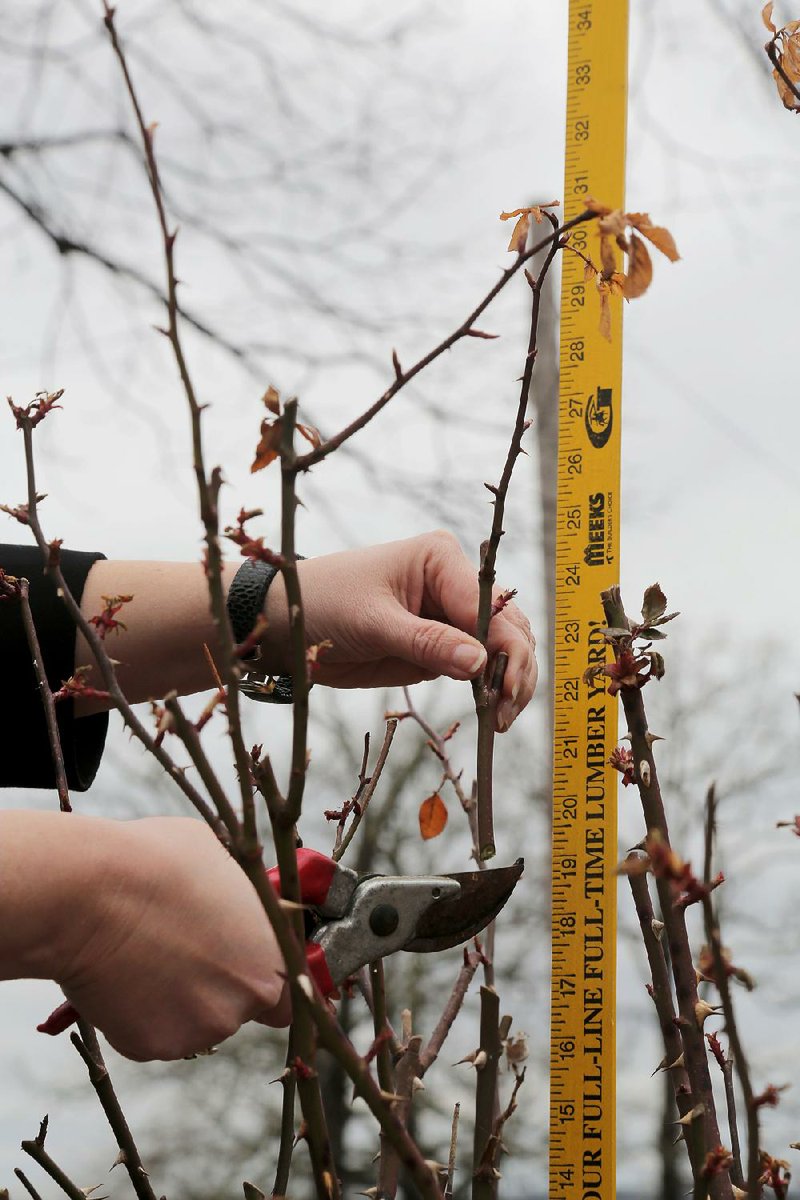FEBRUARY
Let's hope we can get off the weather rollercoaster we've been riding since December. If you think you are confused, consider our poor plants, which are out in it 24/7. So far we seem to have little plant damage, with the exception of a few burned-back flowering winter annuals and vegetables.
• Flowering quince, mahonia and winter honeysuckle should all be blooming soon, and I have already seen blooms on Camellia japonica and some lingering blooms on Camellia sasanqua. Hellebores are also blooming nicely, and some early bulbs are beginning to bloom as well.
• Pay attention to the weather. If really cold spells are predicted, you could cut some blooms to enjoy indoors -- especially on those camellias. Covering plants will only give a few degrees of protection, but that can help.
• From pansies and violas to parsley and flowering kale, winter annuals like a little nutrition from time to time. When we have a mild spell, fertilize them. The new "Cool Wave" pansies are spreading nicely. All in all, in spite of winter weather, our winter color seems to be faring quite well.
• If you have color in containers, don't forget to water periodically. Container plants dry out faster than those in the ground.
• February is for pruning. Late in the month, prune back all ornamental grasses (monkey grass included), fruit trees, blueberries, crape myrtles only as needed, along with summer-flowering shrubs, including butterfly bush, summer spirea, althea and vitex. Roses are also pruned this month, except for climbers -- let them bloom before pruning. Before you begin to prune, have a reason to do so.
• Winter weeds continue to thrive in spite of the weather. If you only have a few weeds, hand weed or use a string trimmer to zap them low. Your dormant lawn won't be hurt. If weeds are taking over and you want the lawn weed-free, you need to use a herbicide to kill them, and you need to do so soon, before the lawn awakens and the weeds set seeds. You can also mow weeds to keep them from blooming.
• Vegetables that were planted in late fall have overwintered quite nicely or not so well, depending on how well they were established and protected. February is the time to begin planting English peas, broccoli and cabbage transplants, onions, kale, greens, lettuce, bok choy and carrots.
• If you planted a cover crop in the garden, mow it down low and work it into the garden.
• February is the last official month of dormancy, and as you can tell by your garden, many plants are perking up. If you have shrubs or trees that need to be transplanted, get it done this month. Be careful if you transplant on a windy, cold day. Roots can dry out quickly and be damaged by cold weather.
• Spring bulbs are up and growing, and a few are even blooming. When you see the flower bud beginning to show, that is a great time to sprinkle with a general fertilizer. Bulbs can bloom from now through April, but remember that the foliage needs to grow for at least six weeks after bloom to ensure flowers again next spring.
PLANT OF THE MONTH
Fruit trees are gaining popularity as more and more gardeners are planting them in their landscapes.
Apples and pears are a bit easier to grow than peaches and plums, but all of these trees need annual pruning, and February is typically the time we do it.
Prune fruit trees every year to maintain size and shape, but also to increase productivity and keep the trees healthy.
While there are different pruning methods, traditionally, apples, pears and plums are pruned so the tree has a central leader. The growth pattern of these trees is for the main stem of the tree to be dominant -- almost like a Christmas tree. Peach and nectarine trees are usually pruned to leave an open center, sort of like an upside down umbrella. The open center is preferred as it "opens the trees up" for better air circulation and sunlight, helping to inhibit diseases.
As you get started pruning, remove the obvious broken branches or branches crossing each other or growing directly on top of one another. Then selectively thin and maintain the height to make picking easier. For more pointers, see the University of Arkansas Cooperative Extension Service fact sheet on pruning fruit trees. Go to uaex.edu and search for "FSA-6042."
Janet B. Carson is a horticulture specialist for the University of Arkansas Cooperative Extension Service.
HomeStyle on 02/04/2017

